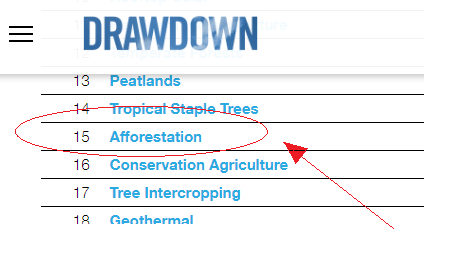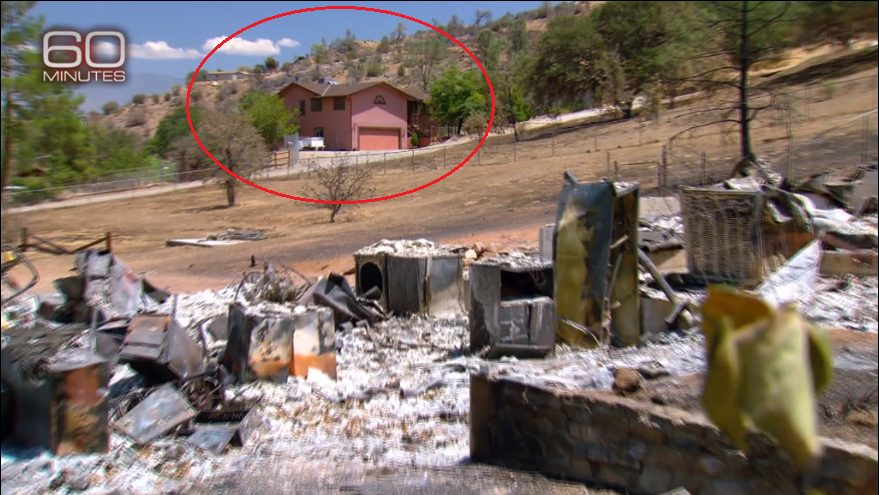Trump in CA Today Said 'A Forest Nation', But 'Afforestation' Draws CO2 Down
A president visited California today to talk about the importance of "A forest nation." Nobody knows what he meant, but it's a great time to mention "Afforestation" as the 15th of 80 most-effective means of reversing CO2 emissions as ranked by climate scientists the world over, edited by Paul Hawken into a book called "DrawDown" (in bookstores now! Makes a great coffee table book! Remember what you tell your kids: many politicians get in front of a parade!) <-- Intrepid blogger talking through my teeth.
The DrawDown book and website describes Afforestation:
Creating new forests where there were none before is the aim of afforestation. Degraded pasture and agricultural lands, or other lands corrupted from uses such as mining, are ripe for strategic planting of trees and perennial biomass.With that definition out of the way, let's look at the Saturday night headlines to see how well our mass media is covering both the problem and pointing us to a solution... What's this? Imagine the nerve of these evacuees. Props to the editor who wrote this apt headline: "Many wildfire survivors too busy seeking help to watch Trump" said Yahoo! News. Outrageous headline at first, outrageously sensible from a distance.
Afforestation can take a variety of forms—from seeding dense plots of diverse indigenous species to introducing a single exotic as a plantation crop, such as the fast-growing Monterey pine, the most widely planted tree in the world. Whatever the structure, afforestation creates a carbon sink, drawing in and holding on to carbon and distributing it into the soil.
Plantations comprise the majority of afforestation ... full article at https://www.drawdown.org/solutions/land-use/afforestation
More on that later. Let's take a look at the "impact summary" DrawDown gives to Afforestation:
IMPACT: As of 2014, 709 million acres of land were used for afforestation. Establishing timber plantations on an additional 204 million acres of marginal lands can sequester 18.1 gigatons of carbon dioxide by 2050. The use of marginal lands for afforestation also indirectly avoids deforestation that otherwise would be done in the conventional system. At a cost of $29 billion to implement, this additional area of timber plantations could produce a net profit for landowners of over $392 billion by 2050.Hey, NatGeo, please send reporters over to Pakistan who embarked on a massive tree-planting binge in 2015. How is their progress?
-----------------------------
Further Reading:
Pakistan has planted over a billion trees: weforum.org
Pakistan's 'Billion Tree Tsunami' is a provincial government programme described as a 'true conservation success story'. aljazeera.com
In Pakistan, an ambitious effort to plant 10 billion trees takes root: washingtonpost.com
Kardashian's private firefighters expose the fault lines of America: theatlantic.com
"The Trump administration’s own budget request for the current fiscal year and the coming one proposed slashing tens of millions of dollars from the Department of Interior and U.S. Forest Service budgets dedicated to the kind of tree clearing and other forest management work experts say is needed." sacbee.com
"'I think for a number of years the feds were more ahead of this dilemma, at least in discussions,' said Scott Stephens, a professor of fire science at the University of California, Berkeley. But 'I have to say right now, I think the state is moving ahead. It’s certainly being more innovative, it’s doing more policy work.'" sacbee.com

This work by AJ Fish is licensed under a Creative Commons Attribution-NonCommercial 4.0 International License.






